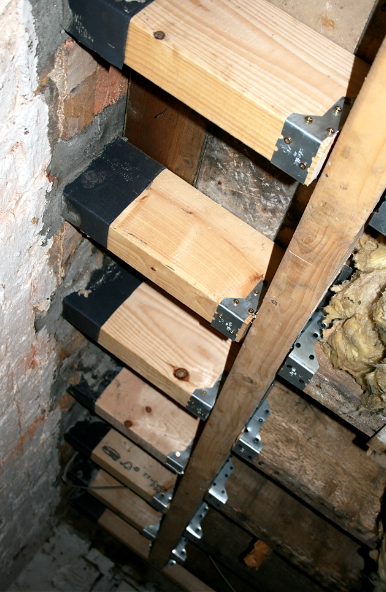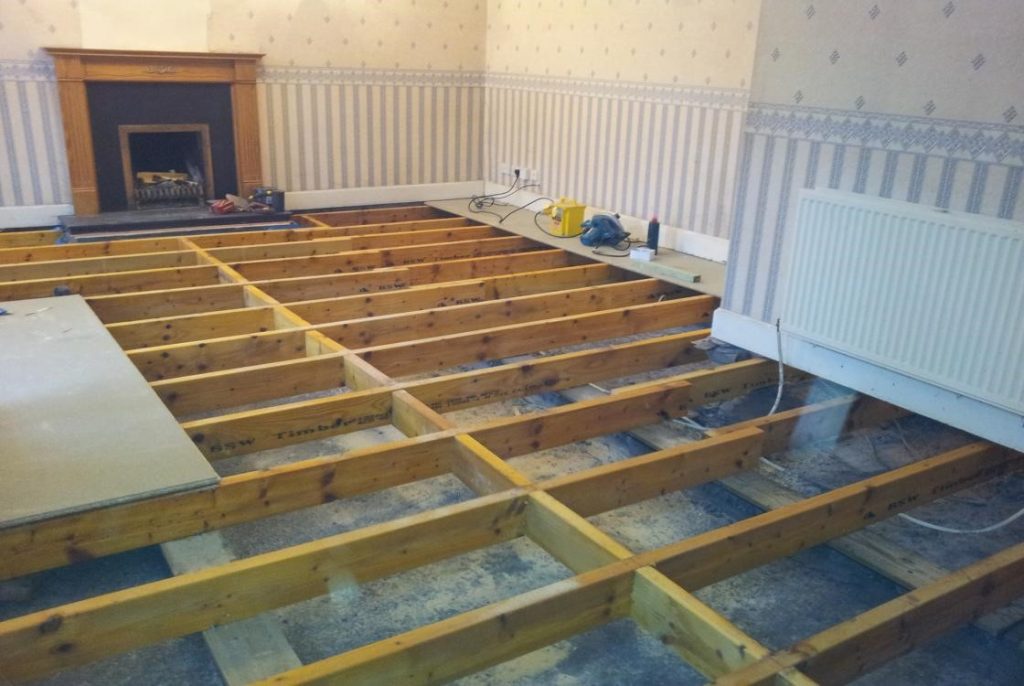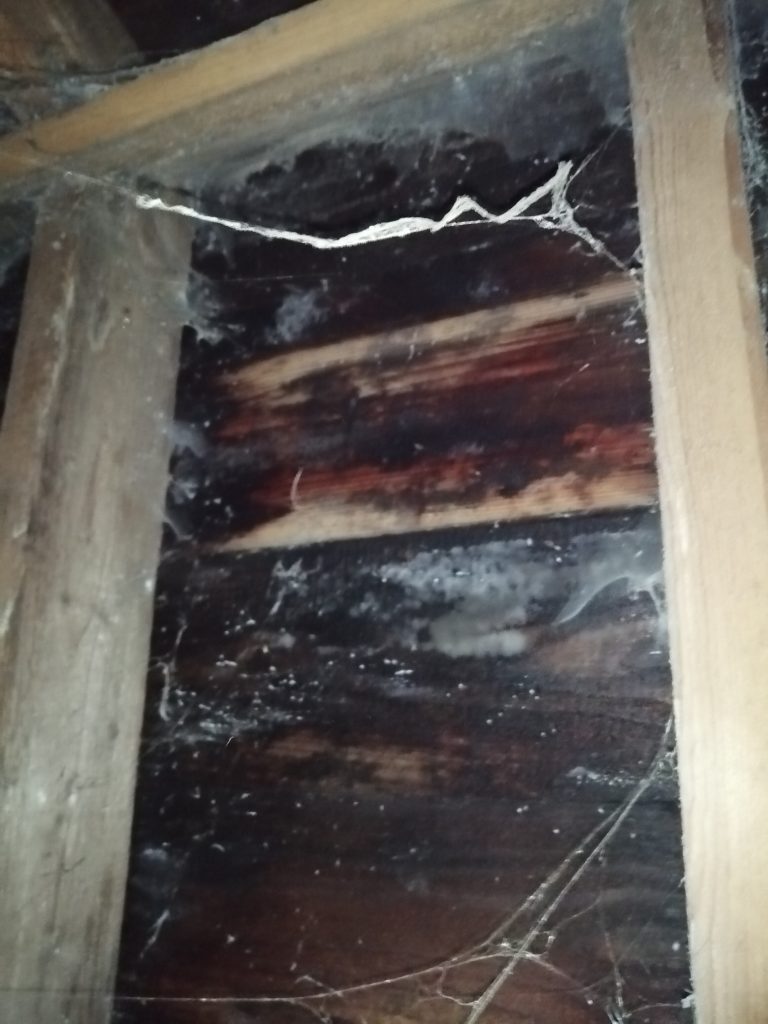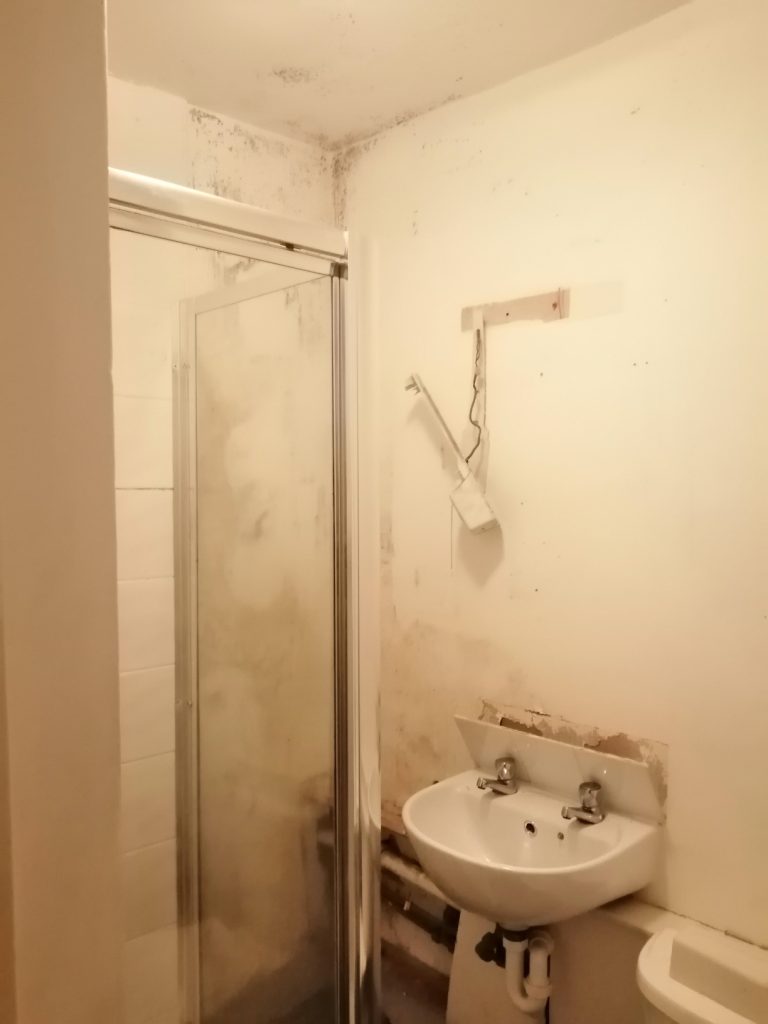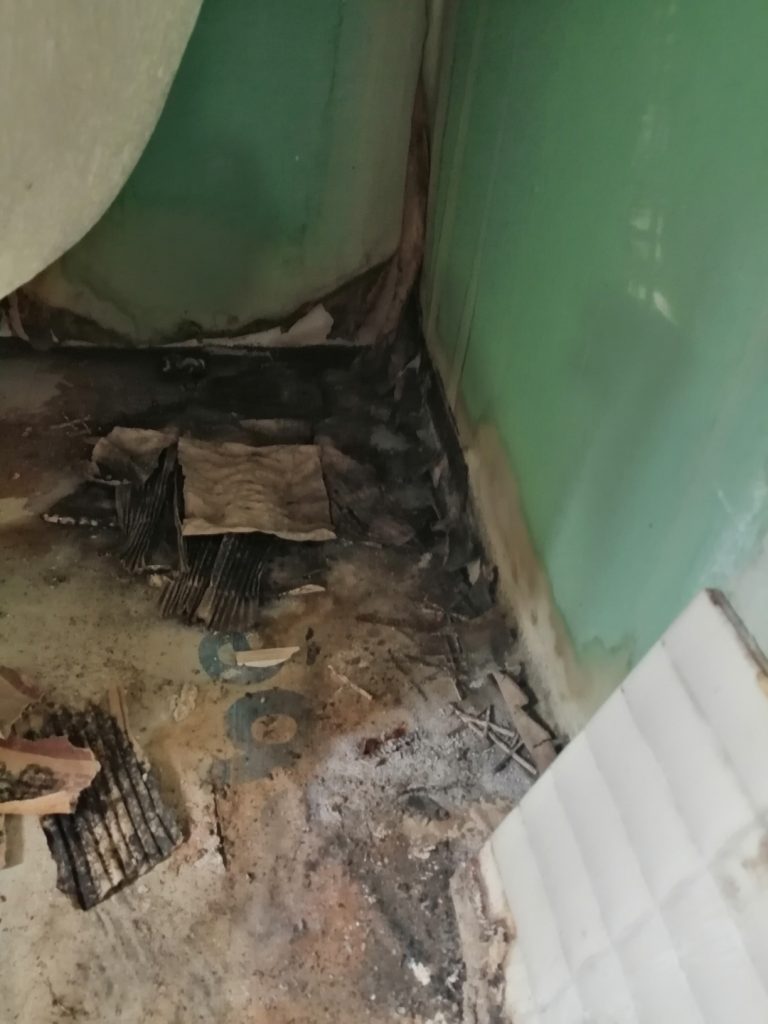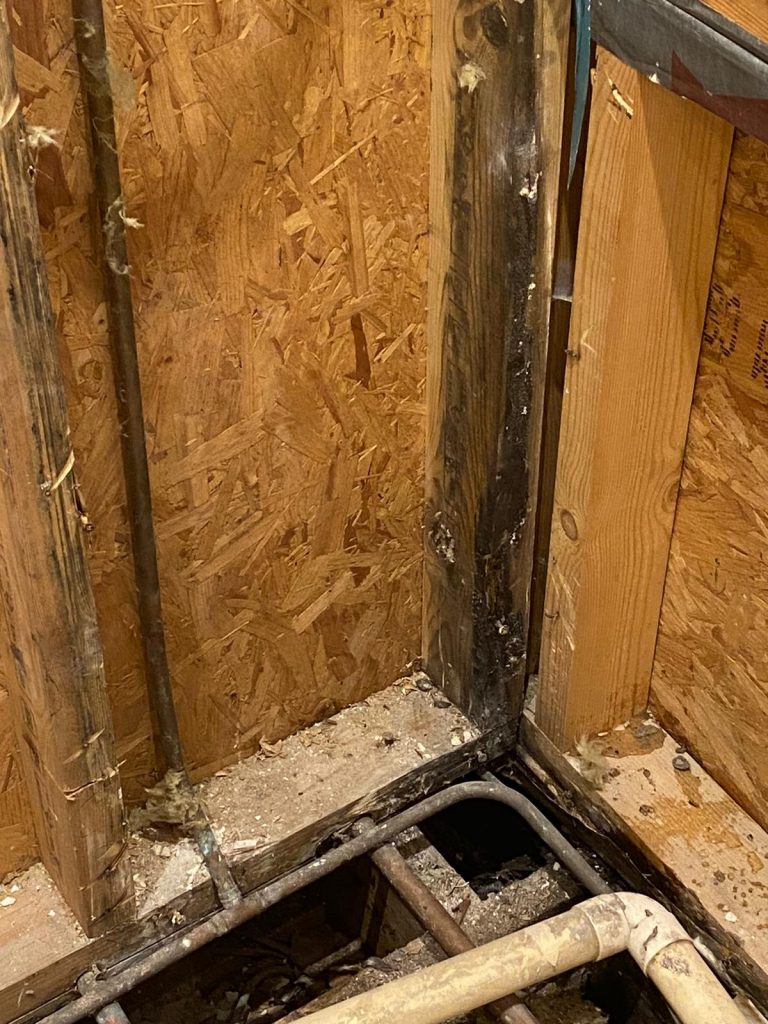Wet Rot is the generic name given to a wide range of wood rotting fungi. The two most common types of wet fungus are Cellar Fungas (Coniophora Putena) & Mine/Pore Fungus (Poria Vaillantii). There are many species of wet rots. Wet rots are generally split up into 2 groups, White Rots & Brown Rots. These groups are named after the rots effect on the wood it is decaying. Brown rots cause the wood to darken. As the wood rots, cracks will appear across the grain. Well rotted wood will crumble to dust when dry. White rots cause the wood to lighten. As the wood rots, it becomes more fibrous and does not crack across the grain.
Wet Rot is caused by an active moisture source and is generally contained with the confinements of the moisture spread, as apposed to Dry Rot. Timber decay through fungus generally starts in the same way, regardless of the kind of fungus it leads to. The sporocarp of a fungus, the part that reproduces or ‘fruits’, sets in the affected area of the timber. Here it produces millions of spores which lead to the expansion of the affected area and these then increase the rate of timber decay. As the spores spread out, they land on nearby wood and timber. Here they form a collection of feeding branches called mycelium. The mycelium begins to break down the timber, using it as food for the fungus. When this occurs, the appearance of timber begins to change. It may appear bleached or discoloured, for example. Eventually, without treatment, the wood will rot to the extent that it becomes unsafe. It can lead to damage to a property’s structural support, for example, and cause the structure to collapse. Wooden floors can become unsafe to walk on and occupants can no longer live in the property.

